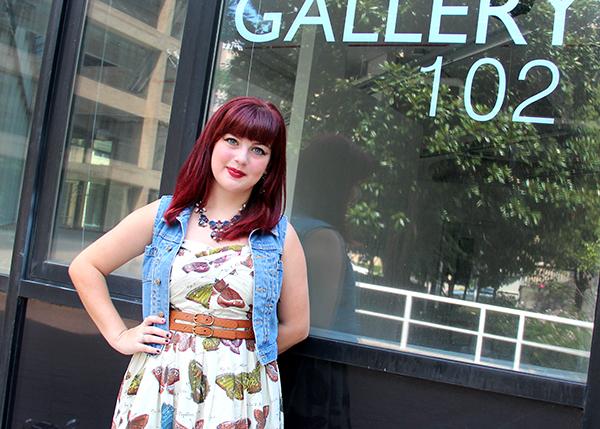The University’s top academic leader plans to bring at least three of GW’s arts departments under the Corcoran school, linking those programs with the name of the historic art school.
GW’s 50-student fine arts department and the Corcoran will function separately for at least the next semester. But that department and the University’s theater and dance programs will likely come under the new school in the future, Provost Steven Lerman said last week.
Migrating those departments would bring the number of programs within the Corcoran school to at least 12 and would add a performing arts department to the historic school for the first time. The move would also give more weight to the arts at GW, which students now say are considered low in priority.
“We intentionally named it the Corcoran School of the Arts [and Design] because I think we want to say that while the strength today is around visual art, we also want to build strength in performing art, which we have tremendous strength in,” Lerman said. “We wanted them to eventually be under one sort of common umbrella to signal that the arts will continue to be very important at GW.”
The provost said the two units will have to strike a balance as they merge a department and a school of students who may have differing career goals. Corcoran students “disproportionately become artists” compared to GW’s past fine arts majors, Lerman said.
“We have many faculty who are probably stronger in the study of art, though we do have people who also create art,” Lerman said.
Lerman said the merger would create a “very productive melding” with the Corcoran. He said the Corcoran’s well-known name could be a boon for GW, helping draw top students interested in arts away from competitors.
Thirteen students graduated with fine art degrees from GW last spring.
“I don’t think any of the peers with whom we compete will have that sort of depth and breadth. I do think it will be a differentiator for some students and will help us in what’s always a competitive market around the different opportunities students have,” Lerman said.
The merger could eventually elevate all of GW’s art programs, including theater and dance, Lerman added. He didn’t say if the music, art therapy or interior design programs could also move under the new school.
[RLBox]
[RL articlelink=”https://www.gwhatchet.com/2014/02/21/at-rescued-corcoran-college-a-new-kind-of-uncertainty/”]
[RL articlelink=”https://www.gwhatchet.com/2014/05/15/gw-commits-to-25-million-renovations-in-corcoran-deal/”]
[RL articlelink=”https://www.gwhatchet.com/2014/05/19/could-the-corcoran-become-the-most-expensive-arts-school-in-the-country/”]
[/RLBox]
Megan Dauerman, a sophomore majoring in fine art at GW, said the merger would also open students to a wider variety of classes in areas the University does not offer now – like printmaking.
“We’re hoping that with this merger we’ll be able to go further into our concentration,” Dauerman said. “We can expand what we can do and take different classes we don’t have.”
Students applying to the Corcoran will also have to submit a portfolio of 10 to 15 pieces of art, which is not a GW requirement for its fine arts program. Lerman said Corcoran students would be able to submit those portfolios and be “very competitive” for the prestigious Presidential Scholarship program, the top award for students in art fields.
But talks between professors in GW’s fine arts department and the Corcoran are just beginning, said Siobhan Rigg, the chair of GW’s fine arts department. She said the discussions so far have focused on the work of Corcoran students and faculty and day-to-day details, like course schedules and available classroom space.
“The first conversations are getting-to-know-you conversations in the sense of getting to know you as a school that we are now both a part of. What are student expectations of classes, what are your expectations of classes, what do you do every day,” Rigg said.
Professors from both GW and the Corcoran said they’ve had little communication with the other group since classes started two weeks ago. Multiple Corcoran art professors said they had not spoken with GW professors, or even been on GW’s campus before Thursday. Several GW fine arts professors said they did not know how the two groups would interact in the future.
“There have definitely been some growing pains,” said Mike Iacovone, an adjunct professor at the Corcoran. “Two years ago, none of us would have imagined it would have come to this.”







